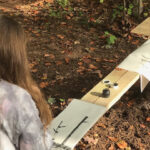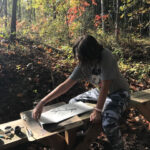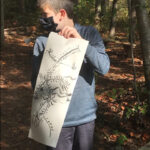The Japanese word “Sumi” translates as “black ink” and the “e” in Japanese means “painting”. Sumi-e was originally brought from China to Japan by Zen Monks. In Sumi-e, Mr. Lundgren says the artist attempts to capture the soul or essence of its subject, the harmony between light and dark tones of ink, and the harmony and balance between positive and negative shapes.
Another video that Ms. Lysne likes to use to demonstrate the Sumi-e brush stroke comes from Shimura Kazu:
Photos of Ink-Wash Paintings from Ms. Lysne’s 7th Grade Class at Woodlawn School:
Additional Information
You can read more about Sumi-e in this article titled, “What Is Sumi-e?” by Carla Jaranson found on the Sumi-e Society of America, Inc.’s website:
http://sumiesociety.org/whatissumie.php
Also, the following website provides additional information about the history of Sumi-e:
https://www.sumi-e.it/en/history/
- Where did Sumi-e originate and what does Sumi-e translate to in English?
- The video talked about 3 things that are important in Sumi-e. What were they?
- Did you try making your own Sumi-e? Were you able to mimic the brush strokes? Was it easy or hard? If you are willing to share, we would love to see your creations.
Earn badges and qualify for prize drawing by registering and answering journal questions. It's fun and easy!





